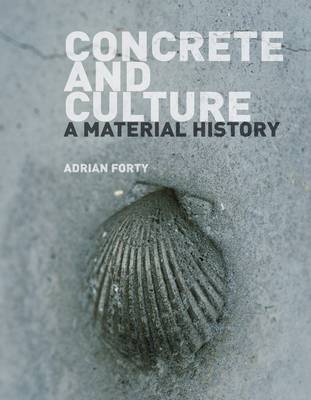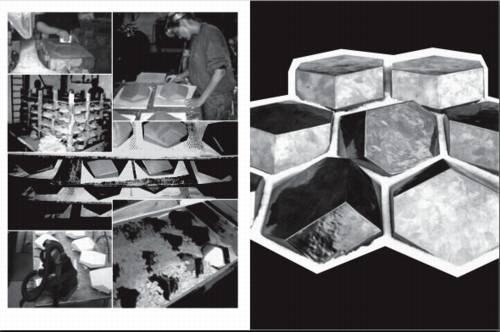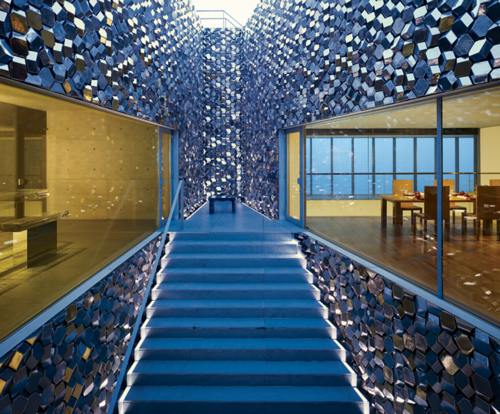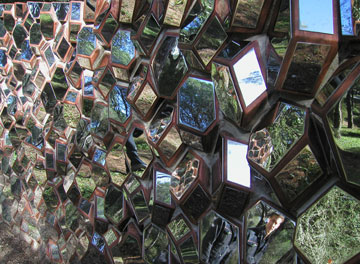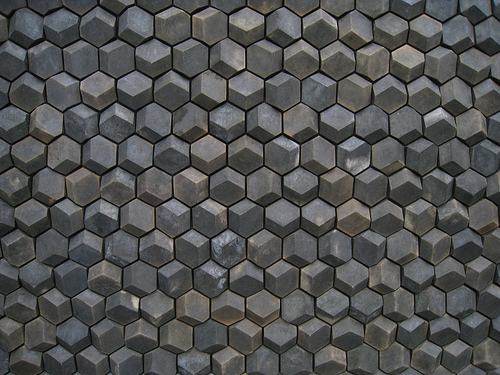Forty discusses ways to reduce either the use of fuels and the amount of cement used - the most effective way to decrease the carbon emissions is obviously to limit the use – while maintaining the properties and quality of the end product – most extremely is to leave the hydraulic Portland cement out and use pre-modern building technology in an industrialized way. An example is hemp-concrete – in which lime and vegetable aggregate mixed with organic hemp fibers as reinforcement for a lightweight non-structural product, with sound-absorbing properties.
[While hemp is naturally growing, one could then discuss whether crops should be grown to supply the World population before building blocks?]
Forty describes aspects of an important and more complex issue of energy use in building which means that one cannot rule out concrete as the biggest energy sinner. While concrete is heavy on carbon emissions during construction, figures from the British Concrete Centre estimate the ‘typical’ 60-year life of a building that about 10 per cent of its CO2 emissions are attributable to construction, and about 90 per cent to heating, cooling and lighting. 90 per cent. This indicates clearly the importance of focusing on the energy use and culture over buildings’ lifetime. Furthermore, heavy buildings (brick and concrete) heat and cool slowly due to the thermal mass. This means that these building types tend to overheat less than more lightweight structures – and will do so in the estimated steep rises of summertime temperatures.
I hate it when I feel like a used car sales person by pointing out benefits – my aim is to add some nuances to the good concrete vs bad concrete (non-)discussion. Judging by the quotes and the references Forty's section may have been written in 2009. This book will be read in ten and twenty years from now so accurate numbers is less important than and the multifaceted approach to the topic. The ten pages about the issue are obviously very general but highlight aspects of the topic of sustainability, of development and the politics and the blame pushed around in the world between the developed and developing countries.
The Concrete Centre uses a ‘typical’ age of 60 years for a building… what does that mean? – for sustainability’s (and everyone’s sake) build beautiful buildings. I heard partner Stephen Kieran of the architectural office Kieran Timberlake say something like this at a debate once: If architecture is ugly it will have a very short lifetime and will never be sustainable. Could this then, please, become a more prominent parameter in the various (expensive and thus complicated) certifications of buildings that pop up everywhere?
For more on the discussion about certifications and sustainability, do keep an eye and ear out for the talented architect and researcher Jan Schipull in his research and architectural work - as soon as he breaks the surface for fresh air after his PhD-dissertation-writing race. (The only decent link that includes some of his work is this presentation about Sustainable integrated product deliveries in renovation and new building construction)
The numbers in this post are all based on Adrian Forty's Concrete and Culture, a Material History, 2012
